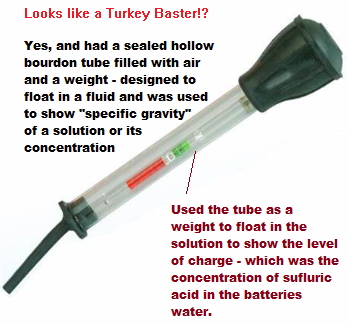If you need to know where I'm getting information like this from, I did a simple search looking for Ford Hybrid Battery Warranty - which is typical 8 years.
I'd recommend you start here...
https://myvehicletalk.com/ford-fusi...00,000 miles covered, whichever happens first.
Now as far as Mileage, the battery is not seen as "miles" travelled, more like duration of its life-cycle - which is more along the lines of time. You can travel a lot more miles in 8 years and the battery would work fine during that time, but after a length of time, the battery - due to those cycles of use for all those miles - will exhibit degradation of its ability to charge, hold a charge and rate of discharge - as it will be a much steeper downward slope curve - versus a gently used battery of similar design but less used (or miles driven) by it.
To help get this into perspective - the Lead Acid battery found in most of today's cars is a simple two dissimilar metal plates suspended in an electrolyte and a spacer. Lithium-Ion types are similar in design except they use Lithium in an electrolyte solution for form ions when it is fully charged - these Ions recombine and in doing so, release power in the process.
Lead Acid batteries have only so much length of service life and shelf life, for the maximum life span is its ability to withstand the Sulfuric acid in the solution in the container, the housing, the metal the plates are and the dielectric - or spacer to keep the plates from touching and shorting out the cell. This life span is reduced if the battery sits filled with the solution it will have to work and use in its life - when empty and sealed from oxygen - the battery is not charged, only ready to be placed into service, then ready when filled. When they put a battery into use, it is filled with this sulfuric acid and is considered fully charged.
Lithium-ion designs are more durable in extreme environments - while the solution of Sulfuric acid used in the lead - acid battery type - has a specific gravity and also is much more environment temperature sensitive.
Not to get too technical...
But your Dad, may have used this device
A Hygrometer, in some form to check his car battery.

- As a sidebar:
- These testers were (in some cases still are) popular in both battery and in Antifreeze testers.
- Sulfuric Acid was one of the mediums Fahrenheit used to show temperature as a freezing point of a fluid into a solid - typical Battery Acid (straight form not modified) freezes at 0F - not 32F like water does - at sea - level atmospheric pressure.
- SO2 (Sulfuric) Acid will also boil at a lower temperature than that of water 212F versus ~185F.
- And is more sensitive to these triple points at lower atmospheric pressures (mountains and elevations) above Sea level.
So, to make a long story short, you'll need to monitor the batteries in that car - for they are approaching the maximum useable life span, in time, and can expire - unexpectedly, due to their failure.
You can't use a Hygrometer in the Lithium Ion designs, only by their ability to hold charge and not drain due to their internal resistance generated by suspension of electrolyte and dielectrical isolation of their separation of charge in the plates - so that uses a circuit like a battery monitor in a smoke alarm, to determine the batteries Go or No-Go condition.
Your decreased MPG due to increased use of the engine- is one of these tell-tale signs.

